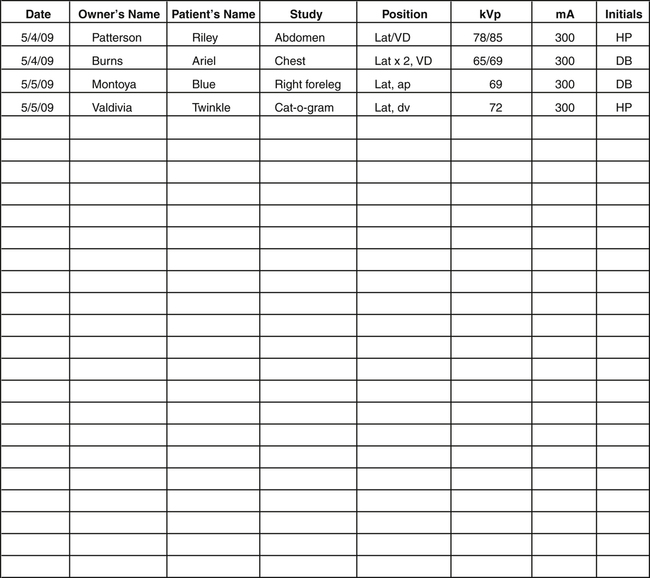CHAPTER 17

Logs
Mastery of the content in this chapter will enable the reader to:
• Define the importance of logs in the veterinary practice.
CONTROLLED SUBSTANCES LOG
Controlled substances are reviewed in Chapter 16, with an example of a drug log in Figure 16-3. This log is required by the Drug Enforcement Agency and the state board of pharmacy. It may also be required by the state board of veterinary medicine in some states. These logs must be kept for 2 years and should be easily retrievable for inspection. Individual controlled drugs must include the date, owner’s name, pet’s name, the amount used, and the initials of the person responsible for the drug. All drugs must be accounted for, and a running drug log must be kept to indicate the balance of each drug at any time.
RADIOLOGY LOG
Some states may require a radiology log; all hospitals should maintain a radiology log regardless of any requirement. Logs are excellent references when taking radiographs or looking up the history of a radiograph. Technicians taking the radiographs can record the information needed as they prepare for the x-ray (Figure 17-1). Radiology logs should include the owner’s name, pet’s name, the body part being radiographed, position, kilovolts, milliamperes, and the initials of the technician. If a radiograph needs to be repeated several days later, team members can review the log and use the same setting (if comparison radiographs are being taken, it is extremely important to have the same settings).

If radiographs are checked out to owners or are sent out for referral, a log needs to be in place to document the removal of the radiographs from the premises (Figure 17-2). Radiographs are the property of the practice and should remain on the premises at all times.

Stay updated, free articles. Join our Telegram channel

Full access? Get Clinical Tree


 PRACTICE POINT
PRACTICE POINT